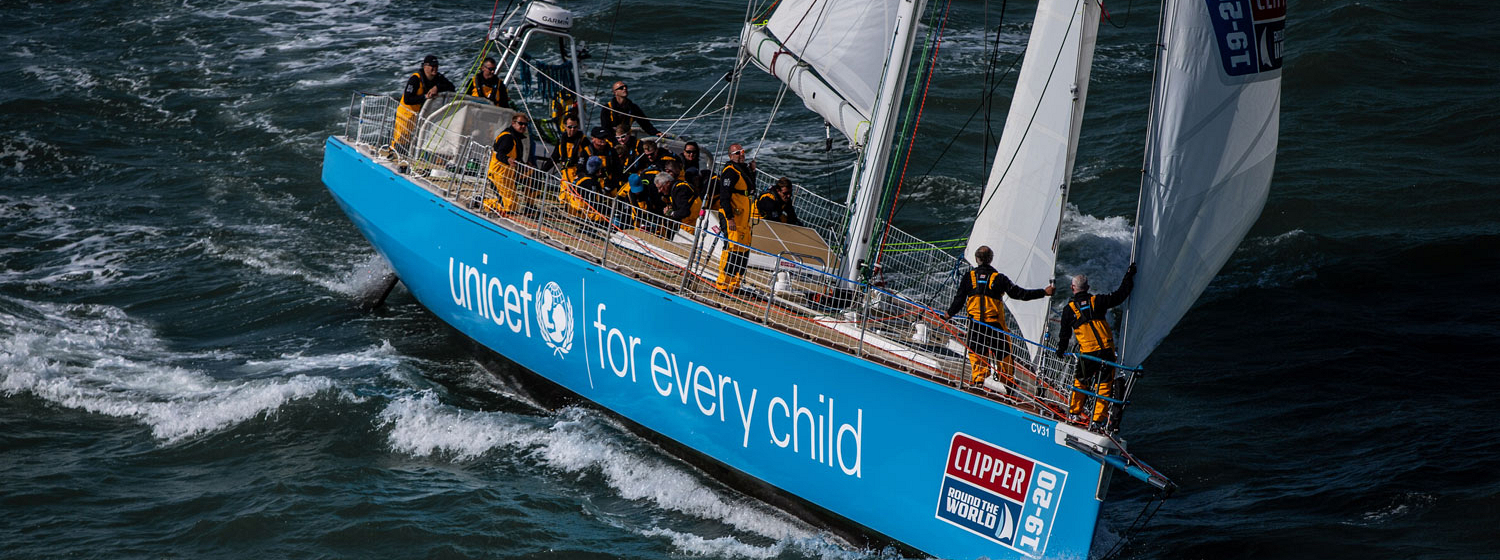Race 3 - Day 12
Crew Diary - Thoughts on Leg 2 – Punta del Este, Uruguay to Cape Town, South Africa
03 November
Back to Reports
View Team Page
Crossing the South Atlantic has been completely different to the voyage from Portugal to Uruguay. The clue is in the word crossing. Portugal to Uruguay, whilst very long, was essentially sailing down the African coast of the North Atlantic, crossing to the other side via the Equator, and sailing down the South American coast of the South Atlantic. By coast I mean that we were rarely more than a few hundred miles from land.
Leg 2 however has been a true ocean crossing. A voyage of 3,500 nautical miles straight across from west to east at roughly the same latitude. It brought home the meaning of ocean, the remoteness, the absence of any shipping and the raw forces of nature, both in the beauty of the night skies and the might of the seas. We had terrific lightning storms in the two days approaching Punta del Este, but nothing compared to the stormy weather systems that have been most of our journey to Cape Town. Days on end of sitting on the high side of the yacht as it veered along at 45 degrees, using as much power as it could handle without going over, An extreme test of our skipper’s skill and experience of choosing the right sails for the wind strength and changing them at just the right time to remain safe yet optimise our progress against all the other competing boats, each trying to do exactly the same. For the crew, it’s a heady mix of intense hard work, long periods of being employed as inactive weight in winds of 40 knots with waves crashing over us in order to enable to boat to handle more power and the extreme exhilaration that comes with being on the edge.
It made me realise that a cruising skipper will see the storms ahead in the forecasts and will endeavour to avoid them; the racing skipper avidly relishes them and seeks them out in order to exploit their wind.
One of the other realisations I had was how for many of our activities, we are akin to being soldiers on sentry duty. Long periods of merely being watchful yet having to spring into action at a moment’s notice. In those periods of being able to observe the sea, the clouds and the wildlife, for me the star of all is the sea birds, often described as the pelagic birds that inhabit the vast oceans well away from the coasts and continental shelves where seaside birds live. We are all enthralled by the dolphins that periodically accompany us on our voyage, the rare sight of a whale, but the majesty of the albatrosses, petrels and many others as they float and glide, seemingly effortlessly, in the air in gale-force winds keeps us in constant awe. This constancy is in stark contrast to, for instance, observing birds on land as they flit from bush to bush. No matter how entrancing they are, the joy of seeing them is fleeting. By contrast, these pelagic birds are an almost constancy. With no trees to hide in, they are there to look at in wonder endlessly,
A return journey as part of a pelagic bird-watching trip is certainly something to think about.
JD

